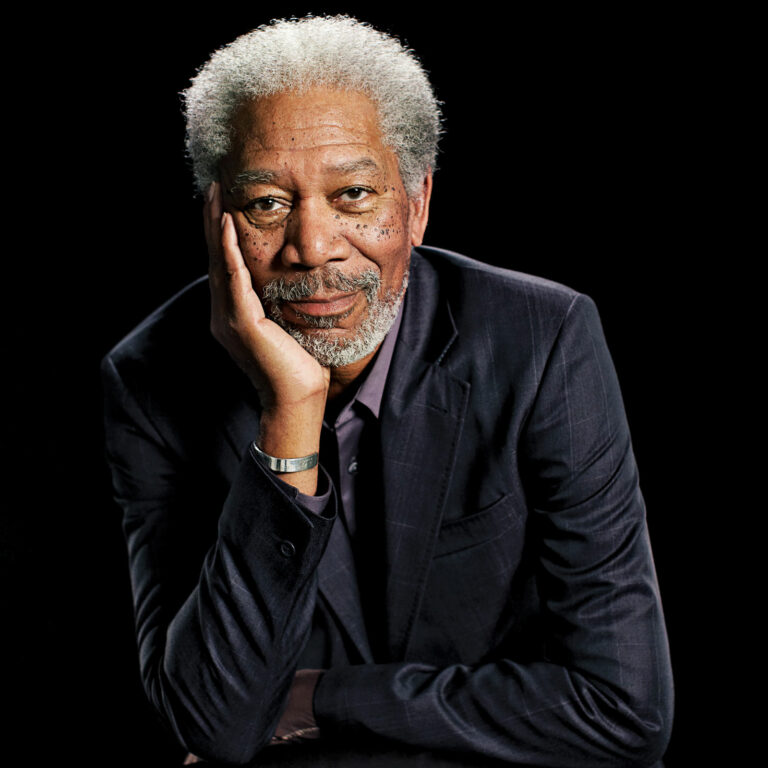Body Language – A Detailed Guide
Body language cues can help us read and understand others better.
Body language is a fundamental aspect of human communication. We communicate not just with words, but also through gestures, facial expressions, posture, and eye contact. Understanding and mastering body language can significantly enhance your ability to communicate effectively, whether in personal relationships, professional settings, or social situations.
While verbal communication plays a crucial role in conveying messages, non-verbal communication—especially body language—can often convey emotions, intentions, and attitudes more accurately than words alone. In fact, studies suggest that up to 93% of communication is non-verbal, with 55% attributed to body language, 38% to tone of voice, and only 7% to the actual words spoken.
In this article, we will explore the different types of body language, their meanings, and how you can use them to improve your communication skills and overall effectiveness.
1. What is Body Language?
Body language refers to the non-verbal signals we send through our posture, facial expressions, gestures, and eye contact. These physical cues can reveal a great deal about our thoughts, feelings, and attitudes, often conveying emotions and intentions that may not be expressed verbally.
- Facial Expressions: Our faces are capable of showing a wide range of emotions, such as happiness, sadness, anger, fear, surprise, and disgust. Even without saying a word, a person’s facial expression can communicate how they feel at any given moment.
- Posture: The way we position our bodies also communicates messages. Standing tall with shoulders back can indicate confidence, while slumping or crossing arms can be interpreted as defensiveness or discomfort.
- Gestures: Hand movements, nods, or shaking the head can indicate agreement, excitement, frustration, or other emotions. For example, a thumbs-up typically signifies approval, while wringing hands might suggest nervousness.
- Eye Contact: Eye contact can be a powerful tool for conveying interest, trust, or attentiveness. Lack of eye contact can suggest disinterest, avoidance, or even dishonesty.
- Proxemics: The physical distance between individuals also plays a role in communication. Standing too close might feel invasive, while standing too far away could seem distant or uninterested.
2. Types of Body Language
Body language can be divided into several categories, each of which serves a different purpose. Understanding these types can help you interpret body language more effectively and communicate more clearly.
2.1 Positive Body Language
Positive body language indicates openness, confidence, and engagement. When people use positive body language, they are generally more approachable, trusted, and persuasive. Here are some examples:
- Open Posture: Keeping your arms uncrossed and your body facing the other person shows that you are open to communication and not defensive.
- Smile: A genuine smile conveys friendliness, warmth, and approachability. It is a powerful signal that puts others at ease.
- Eye Contact: Maintaining eye contact, while not overdoing it, shows that you are engaged and interested in the conversation. It conveys sincerity and attentiveness.
- Leaning In: Slightly leaning toward someone while they are speaking can indicate interest and engagement. It shows you care about what they are saying.
2.2 Negative Body Language
Negative body language can convey discomfort, defensiveness, or disinterest. These signs are often unconscious but can significantly impact the way others perceive you. Examples of negative body language include:
- Crossed Arms: This can suggest that a person is closed off, defensive, or not open to what is being said.
- Fidgeting: Constantly shifting, tapping your feet, or playing with your hands can suggest nervousness, anxiety, or impatience.
- Avoiding Eye Contact: Looking away from someone or avoiding eye contact can signal disinterest, dishonesty, or lack of confidence.
- Slouching or Hunched Shoulders: Poor posture often signals a lack of confidence or discomfort. It can make you appear disengaged or unapproachable.
2.3 Neutral Body Language
Neutral body language is typically neither positive nor negative. It involves basic body movements and gestures that do not strongly convey a particular emotion or message but still provide important information. Examples include:
- Neutral Facial Expression: A calm or neutral face does not display strong emotions, which can signal neutrality or a lack of emotional investment.
- Relaxed Posture: Sitting or standing comfortably without exaggerated movements or gestures may indicate that someone is at ease, though not necessarily engaged.
- Gesturing in Moderation: Subtle hand movements and nods can be neutral signals, neither emphasizing or denying a conversation but serving to affirm or acknowledge points made.
3. How to Read Body Language
Being able to interpret body language is a valuable skill in both personal and professional settings. Reading body language allows you to understand how others are feeling or what they are thinking without relying solely on their words. Here are some key tips for reading body language:
- Look for Consistency: Pay attention to whether someone’s words match their body language. If their verbal message contradicts their body language, it could indicate that they are being insincere or that there is hidden discomfort or disagreement.
- Context Matters: Always consider the context in which body language occurs. People may display certain gestures or postures due to environmental factors or personal circumstances. For example, someone might cross their arms not out of defensiveness but simply because they are cold.
- Observe Micro-Expressions: Micro-expressions are tiny, often subconscious facial expressions that last for only a fraction of a second. These fleeting expressions can reveal a person’s true emotions. While they can be hard to detect, being observant can help you better understand how someone is truly feeling.
- Watch for Clusters of Gestures: A single body language cue, such as crossing arms, doesn’t always mean someone is closed off. It’s important to look for clusters of gestures—like crossed arms combined with a lack of eye contact and fidgeting—to get a better sense of someone’s mood or intentions.
4. Using Body Language to Your Advantage
Body language is a two-way street: not only can you interpret others’ non-verbal cues, but you can also use body language to communicate more effectively yourself. By consciously controlling your body language, you can influence how others perceive you and strengthen your communication skills.
- Project Confidence: Stand tall, maintain eye contact, and keep your posture open to project confidence and competence. When you appear confident, others are more likely to trust and respect you.
- Use Gestures to Emphasize Points: When speaking, using appropriate hand gestures can help emphasize key points and make your message clearer. However, be careful not to overdo it, as excessive gestures can become distracting.
- Mirror Body Language: Mirroring the body language of the person you’re speaking with can help build rapport and create a sense of connection. If they lean in, you can subtly lean in as well. However, it’s important to do this naturally, without overstepping.
- Avoid Negative Signals: Avoid behaviors like crossing your arms, tapping your fingers, or checking your phone, as they can convey disinterest or impatience. Instead, focus on using open and engaged body language.
5. Body Language in Different Contexts
The meaning and interpretation of body language can vary depending on cultural context, individual preferences, and the specific situation. For example:
- In Professional Settings: In business or formal environments, confident body language such as a firm handshake, steady eye contact, and a straight posture can convey professionalism and competence. On the other hand, slouching or avoiding eye contact may suggest disinterest or a lack of commitment.
- In Social Interactions: In social settings, positive body language, like smiling, nodding, and maintaining relaxed posture, can create a friendly and welcoming atmosphere. People are more likely to engage with you when you appear open and approachable.
- In Romantic Relationships: Body language plays a huge role in expressing affection and attraction in romantic relationships. Subtle touches, eye contact, and leaning in during conversations can indicate interest, while avoiding these signals may suggest emotional distance or discomfort.
- In Public Speaking: When giving presentations, body language can greatly influence how your audience perceives your message. Strong posture, hand gestures, and making eye contact with the audience can make you appear more credible and engaging.
Understanding and using body language effectively is an essential skill for improving your communication, whether in social, professional, or personal interactions. By becoming aware of your own body language and learning how to interpret the non-verbal cues of others, you can create stronger, more meaningful connections.
Remember, body language is an incredibly powerful tool that goes hand-in-hand with verbal communication. By mastering it, you not only enhance your ability to express yourself but also improve your ability to understand those around you. Whether you’re giving a presentation, negotiating a deal, or having a conversation, body language can make all the difference in how you are perceived and how well you communicate your message.

Although we are verbal beings who seek answers, this is not always the case. By observing others’ gestures, lookings, actions, and body language, we can supplement, contradict, or even get more information than what is presented within us.
Here are types of language that goes unnoticed but can help you better comprehend others.
(1) Non-verbal or physical language: can be used to communicate as well as spoken language. When we talk about it, we mean those powerful conscious or unconscious gestures or movements that can convey an idea or message to someone.
(2) During a conversation, one person tends to replicate, reproduce, or imitate the other’s gestures, tone of voice, or even attitude. People who replicate them are usually unaware they are doing so.
(3) Scratching our heads: is a pretty common gesture that can mean many things. Repeatedly doing it may indicate a lack of comprehension, bewilderment, tension, or irritation.
(4) Mouth Gesture or Movement: specifically with the lips, is common, but its reasons and explanations vary. Anger, tension, or the effort to repress or cover up other sentiments are all possible meanings of this term.
(5) Onlookers: aren’t astonished to see someone with their hands on their hips. In order to fully comprehend this stance, we must consider the accompanying motions. It can also show pride and confidence.
(6) Swinging Neck: A Person swing their neck side to side or back and forth to relieve tension. Because the neck has so many nerve endings, this movement may help someone relax in a stressful circumstance.




